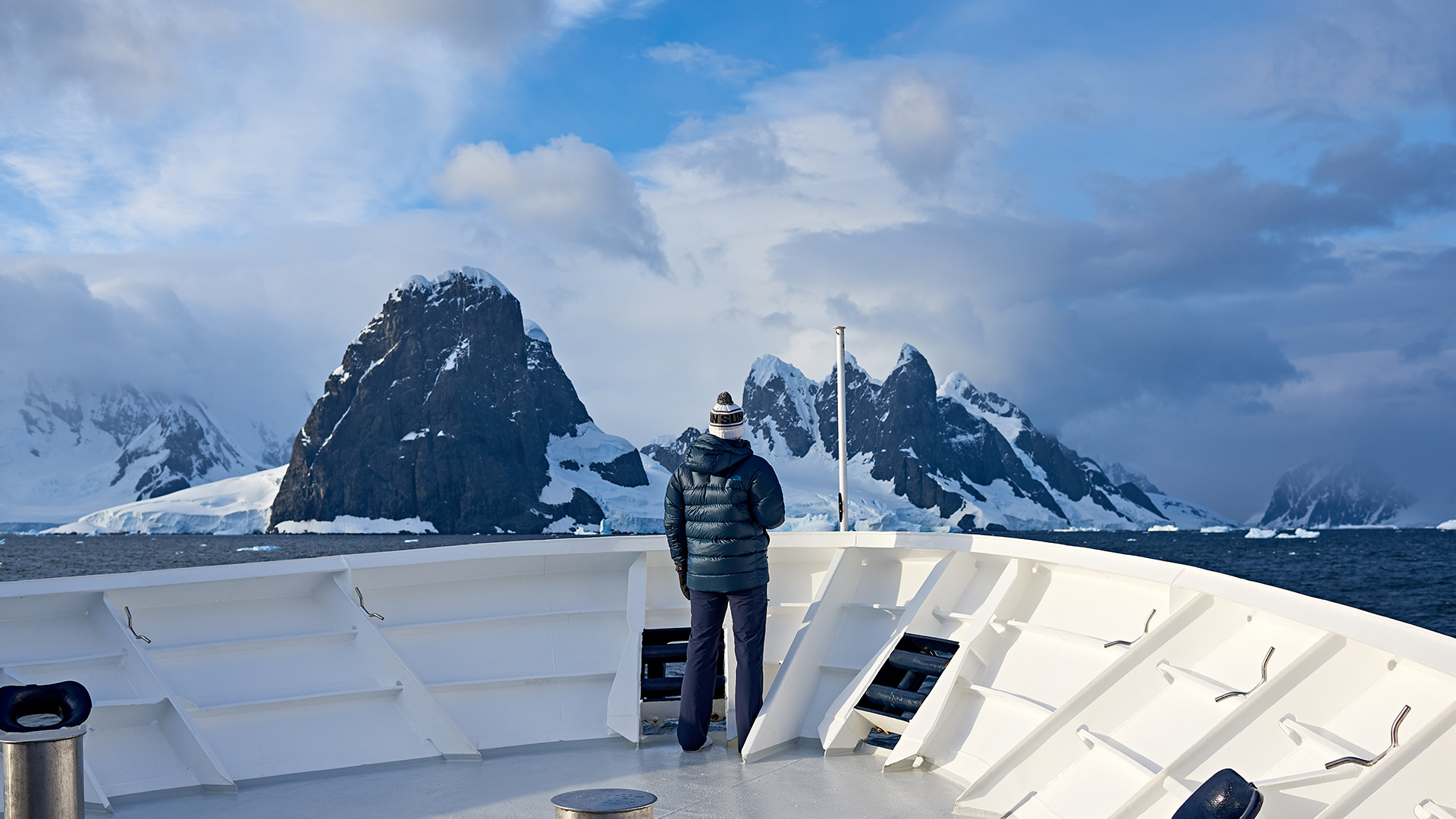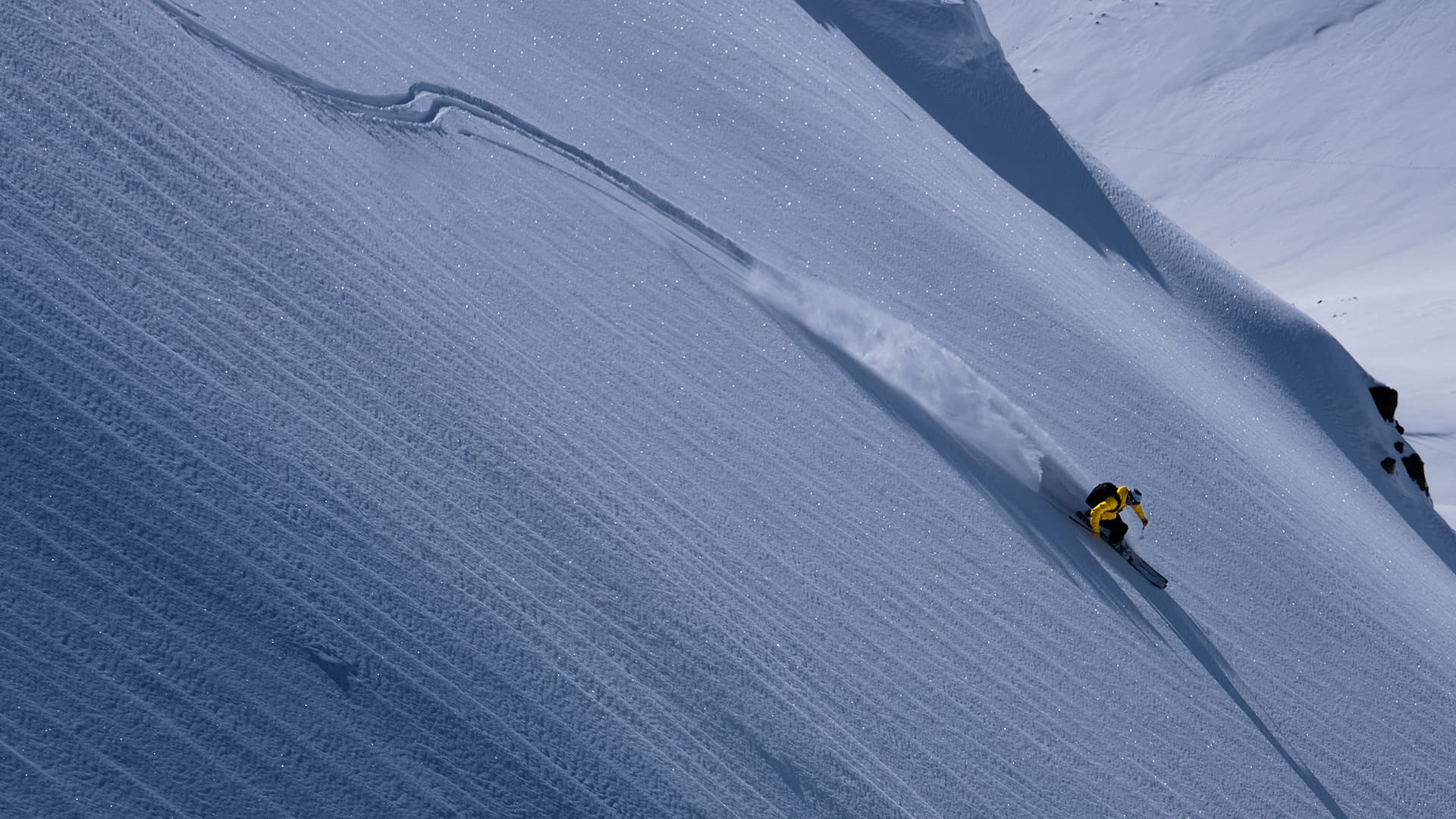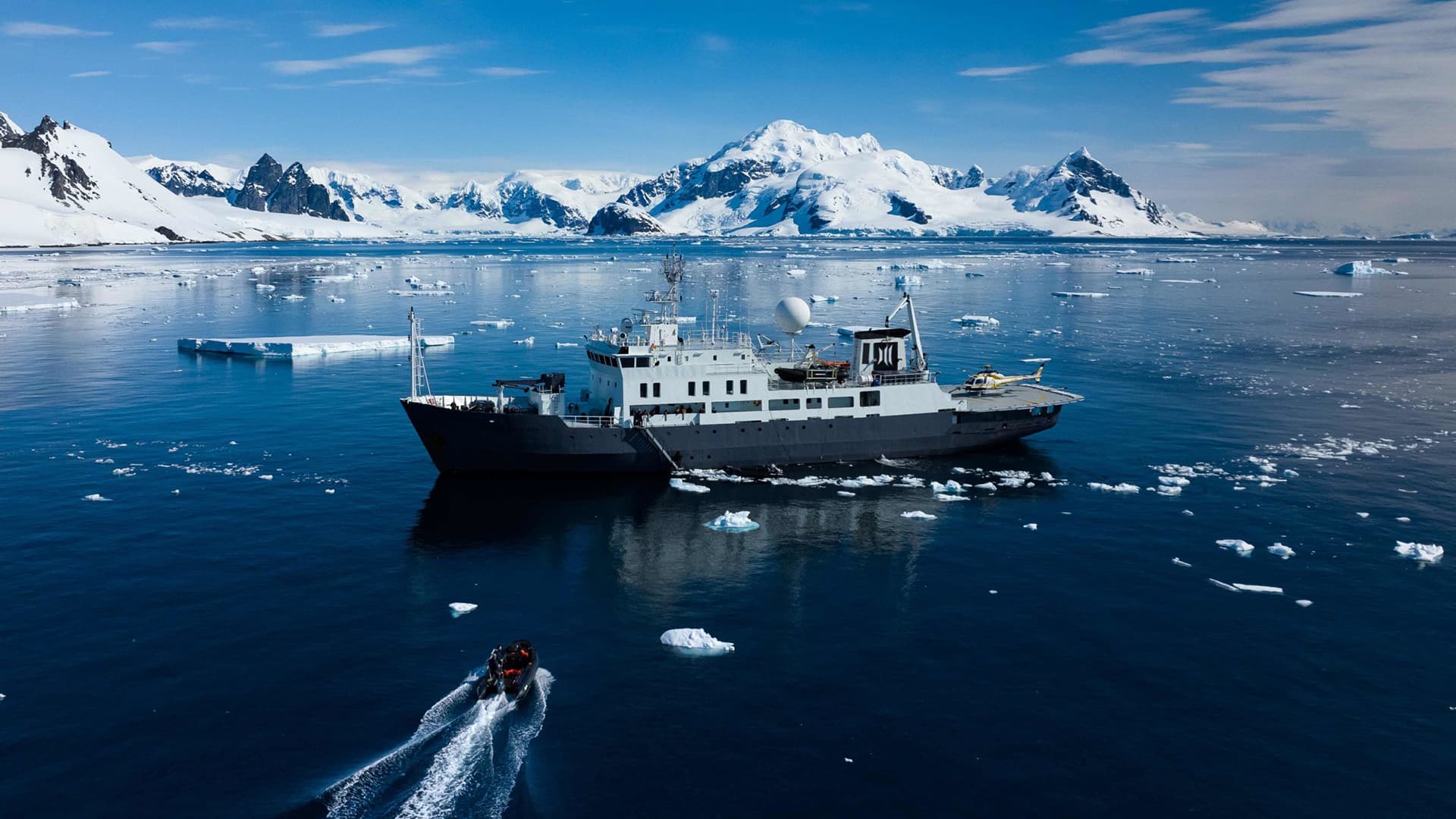Stewart Campbell of The Times UK recently profiled the new age of polar exploration, including OCTOPUS’s first-ever Antarctic charter expedition managed by EYOS Expeditions. Read more about the thrill of high-latitude super yacht cruising below.
The enormous flared bow of the world’s greatest expedition yacht nosed deep into Antarctic waters for the first time late last year. Octopus, 126m long and packing an ice-class hull, was tailor-made for adventures at the southernmost latitudes, but when it comes to Antarctica the superyacht is a latecomer.
It is one of 18 yachts to have braved the voyage from Ushuaia, the southern tip of Argentina, across the boisterous Drake Passage so far this season, compared with 32 last season, the busiest period to date for Antarctic cruising.
“Polar expeditions make up a huge number of our inquiries and the best way to explore polar regions that have little to no infrastructure is undoubtedly on a yacht,” the expedition company Pelorus says. The poles, if you’ll pardon the pun, have never been cooler.
And there’s no sign the desire to journey to the absolute extremes of our planet is dwindling. There are 88 “explorer” superyachts under construction globally — a record — and in the next decade about 200 of these tough long-range vessels will be delivered to their owners. It’s a new age of exploration — with seven-star service and spa pools.
“Awe-inspiring landscapes, enthralling wildlife, the chance to follow in the footsteps of the greatest explorers the world has ever known; there are a lot of rewards in high-latitude cruising,” says Rob McCallum, the founder of EYOS Expeditions, which managed Octopus’s trip. “For some guests, it’s about an iconic voyage round Cape Horn, or to set foot on the fabled seventh continent. For others, it is to experience a world where nature dominates all. The pandemic has given many owners an incentive to reprioritize their plans to get out and explore off the classic cruising routes.”
The Antarctic season runs from November to late February and for those lucky enough to find themselves on a yacht with the right equipment, some truly once-in-a-lifetime experiences are possible, such as heli-skiing on virgin mountains, watching leopard seals hunt for prey, or hearing “the tremendous crash of glaciers spawning icebergs”, McCallum says.
But it’s not a case of pointing your boat south and off you go. Intense preparation is required because no one is coming to save you if something goes wrong in the Ross Sea, warn Jimmy Carroll and Geordie Mackay-Lewis, the founders of Pelorus. The former British Army officers use “military planning models to ensure we have a detailed emergency plan should anything happen”.
Civilization is a little closer at hand in the Arctic, but its dangers are very real. The northern polar season runs from April to mid-September and offers more variety than Antarctica, with the Norwegian archipelago Svalbard, Iceland, Greenland and northern Norway all within range for most superyachts. But it’s the Northwest Passage that represents the ultimate experience for most.

Anil Thadani, the owner of a 45m motor yacht called Latitude, is one of the few people on the planet to have traversed the sea route across the top of Canada twice — east to west and west to east. “I think there are very few ways in which one can use a superyacht that would outdo a cruise to the Arctic Circle,” he says. “The landscapes and scenery are simply indescribable; it is a photographer’s dream. For me the main draw was the wildlife and in particular the opportunity to photograph and document the life of the most impressive creature on earth, the polar bear.”
The number of yachts exploring the Arctic returned to pre-pandemic highs in 2022, with 61 visits recorded. Svalbard was one of the busiest destinations, perhaps no surprise given its accessibility from Europe. “Its small size also means that over the course of a week you are able to see a lot of its coastline, whereas in Greenland a week only allows you to explore a fraction of the coast,” Carroll says.
One of those 61 yachts was the converted tug Asteria. Its owner told Boat International: “I like to think that if I’m in the South Pacific, in the middle of nowhere, and I have a problem, I can always stay on the beach and wait for a helicopter to pick me up. In the Arctic, you can’t do that because you can have a storm and you can be eaten by a bear. There are 100 ways of having a problem.”
Asteria’s owner is in his forties with a family and is part of a new wave of younger owners shunning the Med for less explored waters, even if it comes with risk. For those brave enough, the rewards are clear. “We saw narwhals and belugas. Bears are living on the ice, drifting, swimming, hunting,” he said. “[My boys] have learnt so much and they were so curious and so excited they couldn’t sleep. It’s like an ice safari.”
A version of this story first appeared on March 4, 2023, in the Times UK under the headline “For superyacht owners, the poles have never been cooler.“



